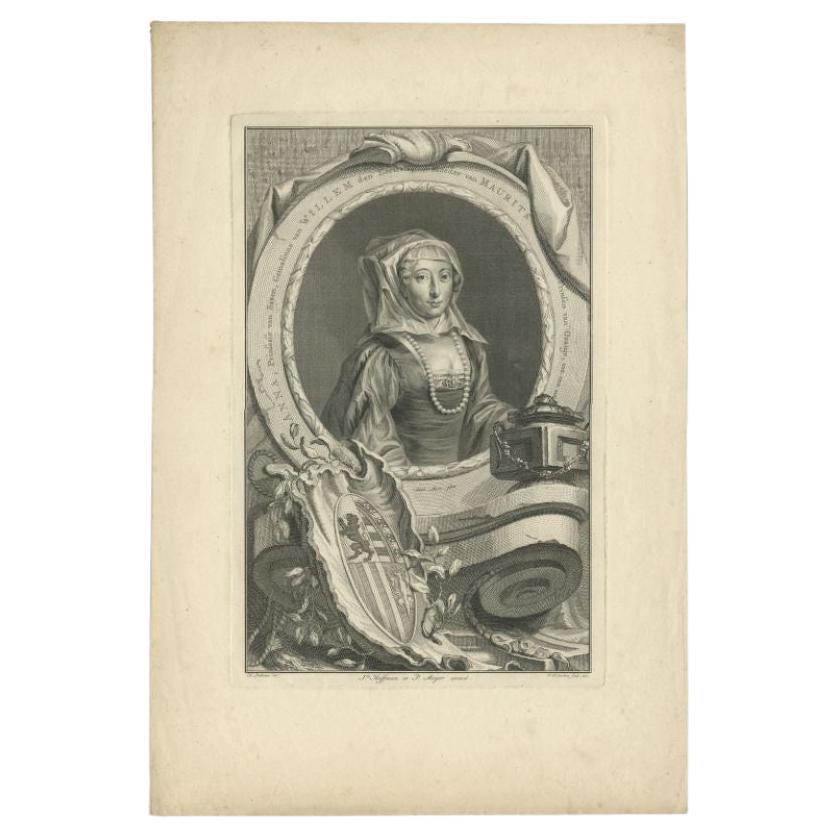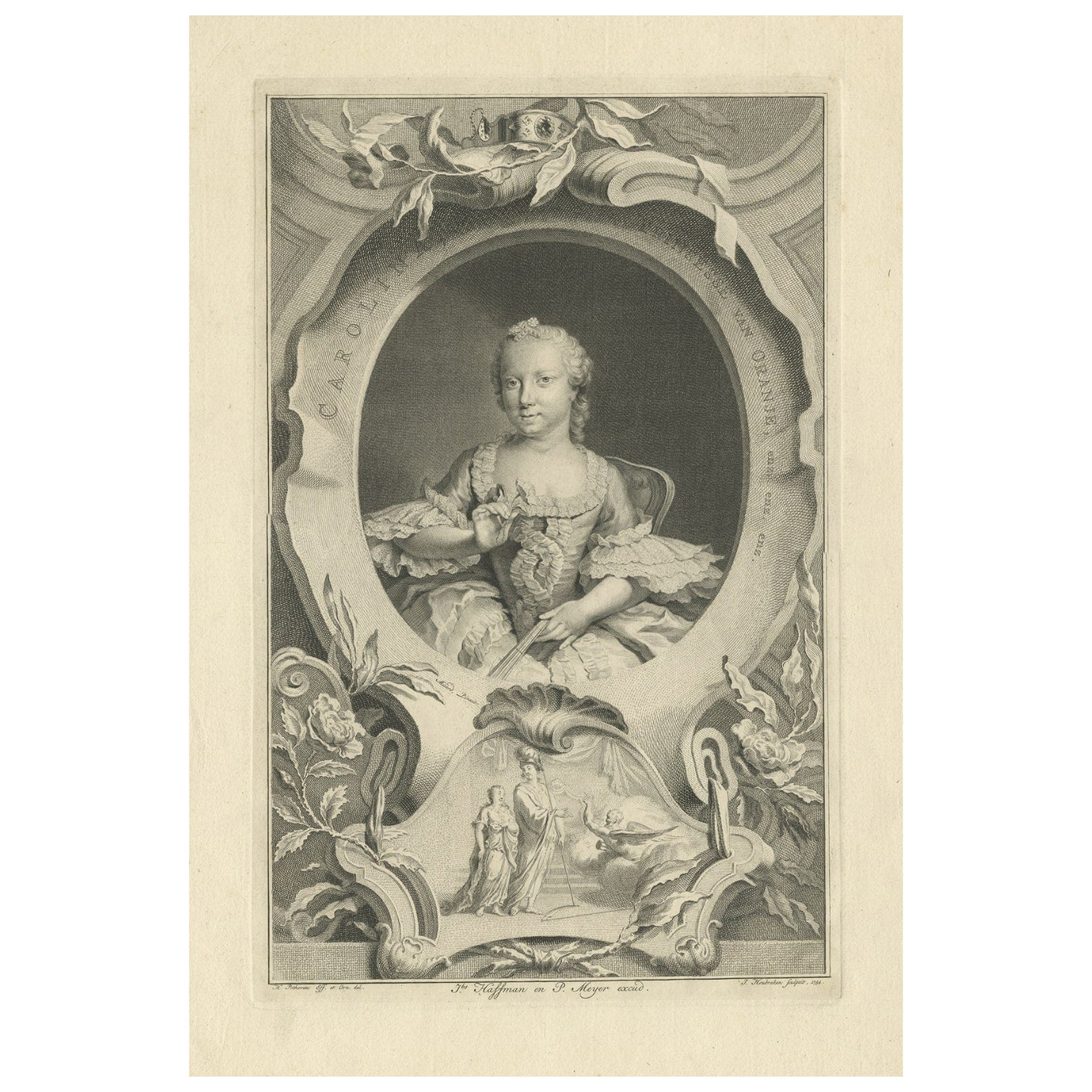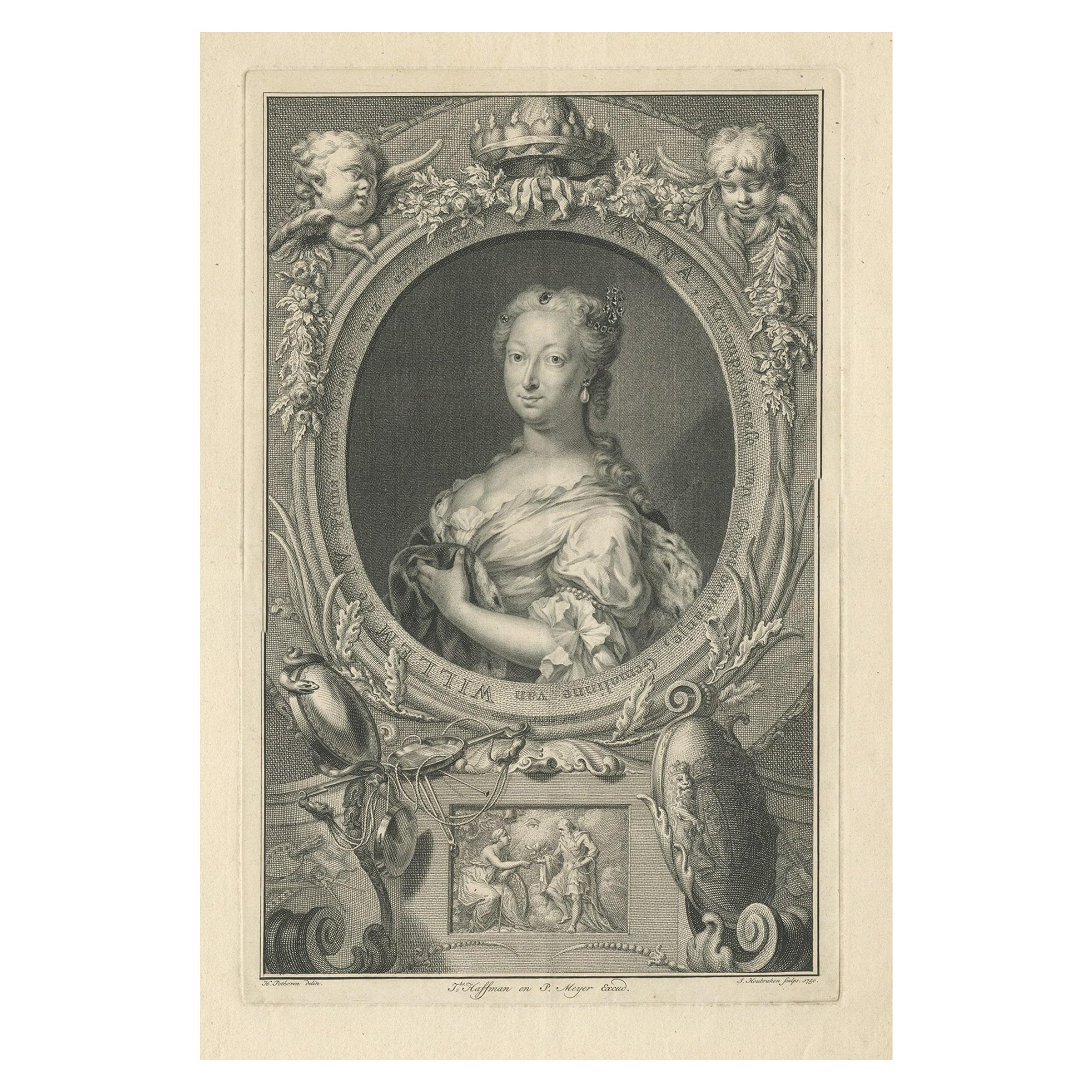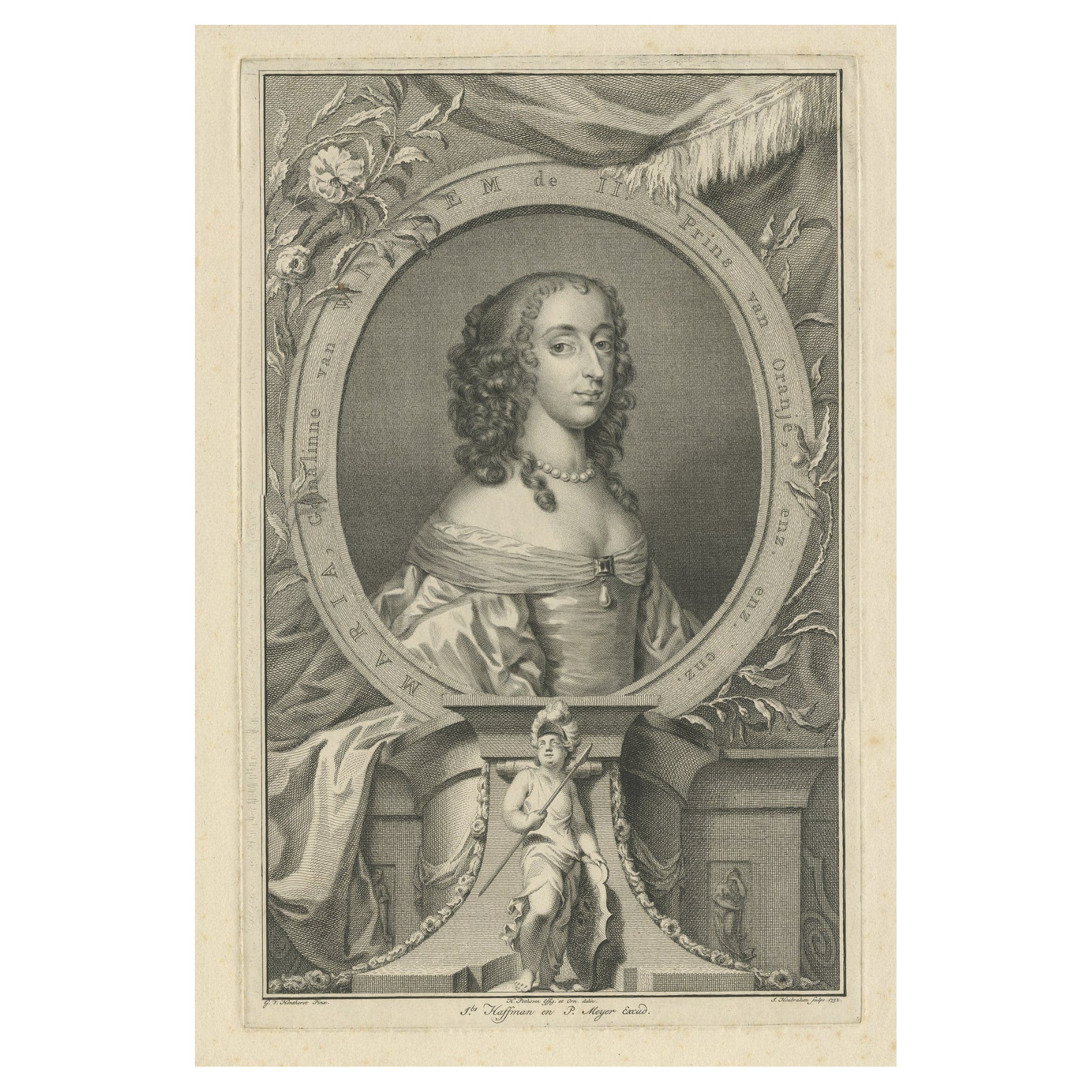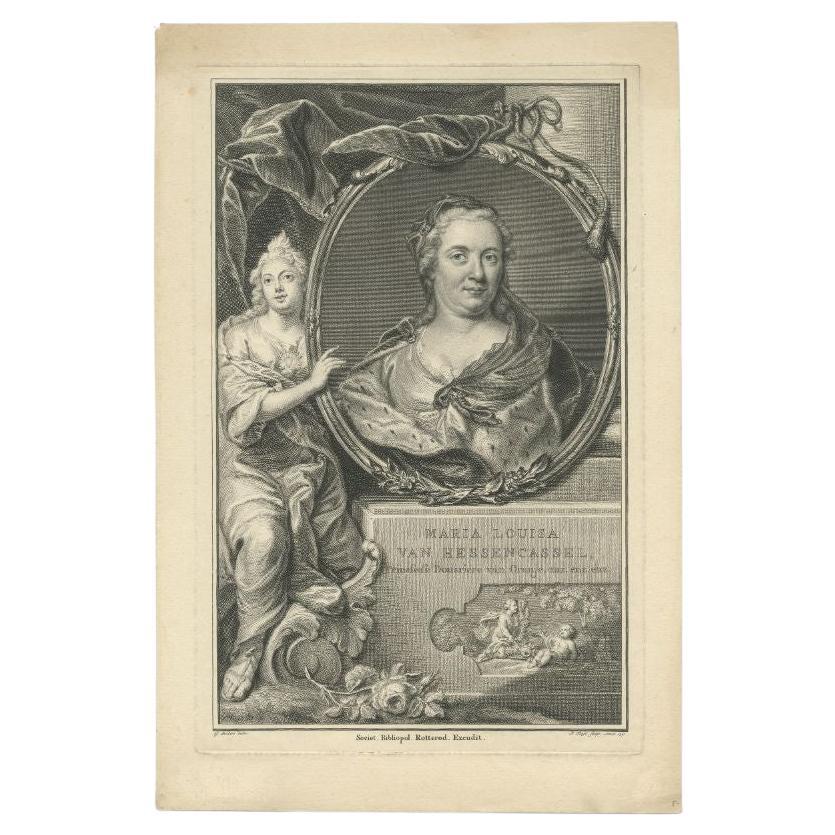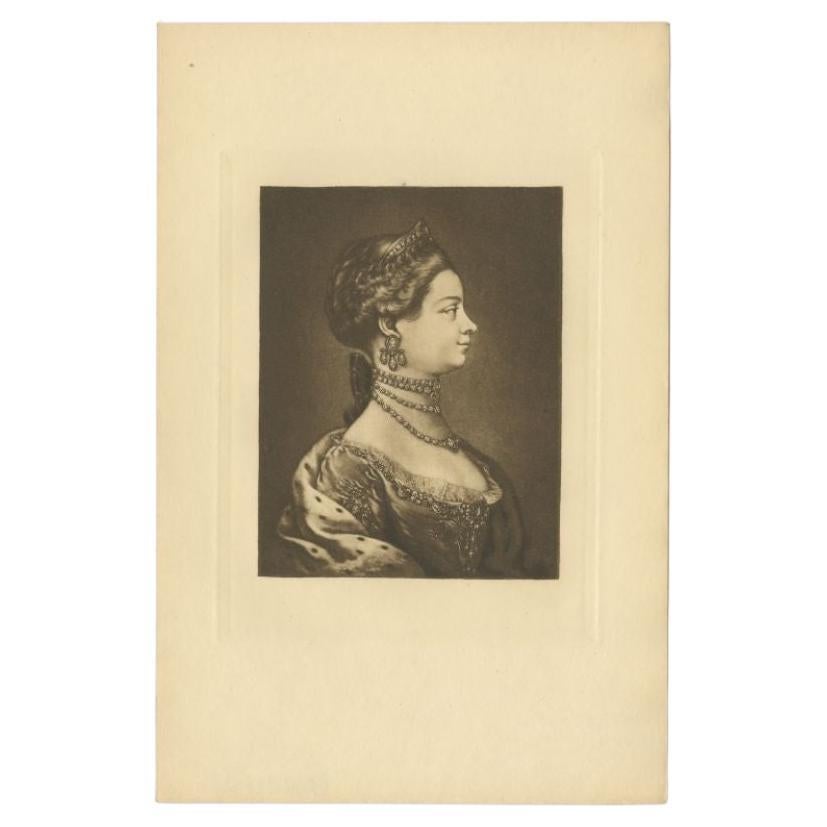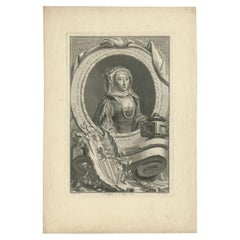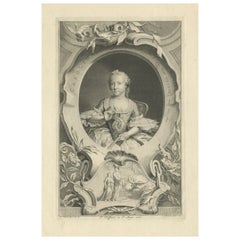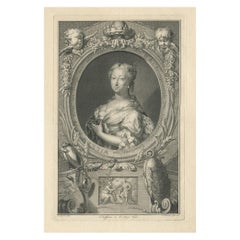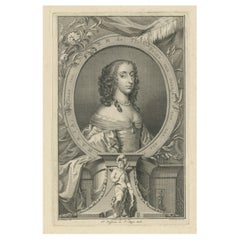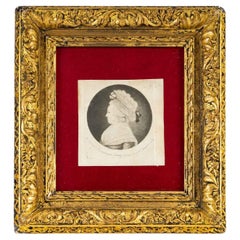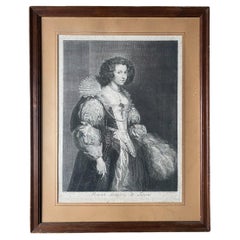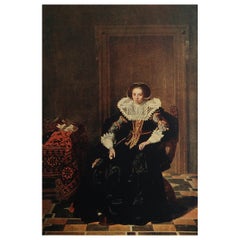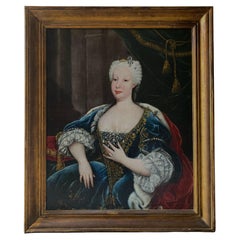Items Similar to Antique Portrait of Amalia, Princess of Orange, by Houbraken Proof
Want more images or videos?
Request additional images or videos from the seller
1 of 10
Antique Portrait of Amalia, Princess of Orange, by Houbraken Proof
$364.55per item
$455.69per item20% Off
£271.19per item
£338.99per item20% Off
€304per item
€380per item20% Off
CA$499.19per item
CA$623.99per item20% Off
A$555.04per item
A$693.79per item20% Off
CHF 289.81per item
CHF 362.26per item20% Off
MX$6,756.14per item
MX$8,445.17per item20% Off
NOK 3,697.84per item
NOK 4,622.30per item20% Off
SEK 3,464.70per item
SEK 4,330.87per item20% Off
DKK 2,314.18per item
DKK 2,892.73per item20% Off
Quantity
Shipping
Retrieving quote...The 1stDibs Promise:
Authenticity Guarantee,
Money-Back Guarantee,
24-Hour Cancellation
About the Item
Rare antique portrait (proof/proefdruk c.1750) titled 'Amelia, Gravinne van Solms, gemalinne van Frederik Hendrik, Prins van Oranje enz enz.'. Engraving of Amalia, Princess of Orange. Half length with curled hair with pearl ropes, pearl earrings and necklace, low gown, and jewelled bodice.
Artists and Engravers: Jakob Houbraken (1698-1780) was a very productive Dutch 18th. Century engraver, who produced a great number of book-illustrations in the taste of the time. He also engraved many portraits and some prints after contemporary masters.
Condition: Very good, please study image carefully.
Date: 1757
Overall size: 29.5 x 42.5 cm.
Image size: 21 x 34 cm.
We sell original antique maps to collectors, historians, educators and interior decorators all over the world. Our collection includes a wide range of authentic antique maps from the 16th to the 20th centuries. Buying and collecting antique maps is a tradition that goes back hundreds of years. Antique maps have proved a richly rewarding investment over the past decade, thanks to a growing appreciation of their unique historical appeal. Today the decorative qualities of antique maps are widely recognized by interior designers who appreciate their beauty and design flexibility. Depending on the individual map, presentation, and context, a rare or antique map can be modern, traditional, abstract, figurative, serious or whimsical. We offer a wide range of authentic antique maps for any budget.
- Dimensions:Height: 16.74 in (42.5 cm)Width: 11.62 in (29.5 cm)Depth: 0 in (0.01 mm)
- Materials and Techniques:Paper,Engraved
- Place of Origin:
- Period:
- Date of Manufacture:1757
- Condition:Condition: Very good, please study image carefully.
- Seller Location:Langweer, NL
- Reference Number:Seller: BG-053671stDibs: LU3054329257202
About the Seller
5.0
Recognized Seller
These prestigious sellers are industry leaders and represent the highest echelon for item quality and design.
Platinum Seller
Premium sellers with a 4.7+ rating and 24-hour response times
Established in 2009
1stDibs seller since 2017
2,510 sales on 1stDibs
Typical response time: <1 hour
- ShippingRetrieving quote...Shipping from: Langweer, Netherlands
- Return Policy
Authenticity Guarantee
In the unlikely event there’s an issue with an item’s authenticity, contact us within 1 year for a full refund. DetailsMoney-Back Guarantee
If your item is not as described, is damaged in transit, or does not arrive, contact us within 7 days for a full refund. Details24-Hour Cancellation
You have a 24-hour grace period in which to reconsider your purchase, with no questions asked.Vetted Professional Sellers
Our world-class sellers must adhere to strict standards for service and quality, maintaining the integrity of our listings.Price-Match Guarantee
If you find that a seller listed the same item for a lower price elsewhere, we’ll match it.Trusted Global Delivery
Our best-in-class carrier network provides specialized shipping options worldwide, including custom delivery.More From This Seller
View AllAntique Portrait of Anna of Saxony, Wife of William of Orange, 1757
Located in Langweer, NL
Antique portrait titled 'ANNA, Prinsesse van Saxen, Gemalinne van WILLEM den Eersten, Moeder van MAURITS Prinsen van Oranje, enz. enz. enz'. Portrait of Anna of Saxony, wife of William of Orange...
Category
Antique 18th Century Dutch Prints
Materials
Paper
Antique Portrait of Princess Carolina, Princess of Orange-Nassau and Weilburg
Located in Langweer, NL
Antique portrait titled 'Carolina, Prinsesse van Oranje (..)'. Engraving of Carolina, Princess of Orange-Nassau and Nassau-Weilburg. Half length wit...
Category
Antique 18th Century Prints
Materials
Paper
$335 Sale Price
20% Off
Beautiful Portrait of Anne, Princess Royal and Princess of Orange, 1750
Located in Langweer, NL
Antique portrait titled 'Anna, Kroonprinsesse van Grootbrittanje, Gemalinne van Willem de IV, Prins van Oranje'.
Beautiful portrait of Anne, Princess Royal and Princess of Orange (1709-1759). Portrayed in an oval with allegorical symbolism beneath a mirror with a snake, a shield with the royal family coat of arms and other elements.
Anne, Princess Royal and Princess of Orange, was the second child and eldest daughter of King George II of Great Britain and his consort Caroline of Ansbach. She was the wife of William IV, Prince of Orange, the first hereditary stadtholder of all seven provinces of the Northern Netherlands. She was Regent of the Netherlands from 1751 until her death in 1759, exercising extensive powers on behalf of her son William V. She was known as an Anglophile, due to her English upbringing and family connections, but was unable to convince the Dutch Republic to enter the Seven Years' War on the side of the British...
Category
Antique 1750s Prints
Materials
Paper
$326 Sale Price
20% Off
Antique Portrait of Queen Mary Henrietta Stuart, Wife of Willem of Orange, 1752
Located in Langweer, NL
Antique portrait titled 'Maria, Gemalinne van Willem de II. Prins van Oranje, enz. enz. enz'. Portrait of Mary, Princess of Orange; half-length dire...
Category
Antique 18th Century Dutch Prints
Materials
Paper
$326 Sale Price
20% Off
Antique Portrait of Maria Louise Van Hessen-Kassel, Mother of William iv, 1751
Located in Langweer, NL
Antique portrait titled 'Maria Louisa van Hessencassel, Prinsease Douariere van Oranje enz. enz. enz'. Poritrait of Maria Louise van Hessen-Kassel also known as Marijke Meu or Maaike...
Category
Antique 18th Century Dutch Prints
Materials
Paper
Antique Portrait of a Lady or Potentially a Queen, circa 1900
Located in Langweer, NL
Antique portrait depicting a lady (or queen?). Source unknown, to be determined.
Artists and Engravers: Anonymous.
Condition: Good, please study...
Category
Antique 19th Century Prints
Materials
Paper
$134 Sale Price
20% Off
You May Also Like
Small Portrait of Madame de Fougeroux de Bondaroy
Located in Saint-Ouen, FR
Small Portrait of Madame de Fougeroux de Bondaroy, physiognomy of Edme Quenedey des Riceys (1756 - 1830).
Measures: H: 22 cm, W: 21 cm, D: 2 cm.
Category
Antique Late 18th Century French Prints
Materials
Paper
A. Van Dyck "Maria Luissa De Tassis" Engraving by C. Vermeulen 17th Century
By Corneille Vermeulen
Located in Beuzevillette, FR
This magnificent etching is a portrait of "Maria Luissa de Tassis", engraved by C. Vermeulen after the painting by A. Van Dyck of 1630. Van Dyck painted in 1630.
Antoine Van Dyck, ...
Category
Antique 17th Century Belgian Prints
Materials
Paper
Original Antique Print. Portrait of A Lady After Thomas De Keyser. C.1900
Located in St Annes, Lancashire
Wonderful print
Chromolithograph
Published by Connoisseur circa 1900
Unframed.
Category
Antique Early 1900s English Baroque Prints
Materials
Paper
Portrait of D. Maria Bárbara De Bragança, Circle of Louis-Michel Van Loo
By H. van Loon
Located in Lisboa, PT
PORTRAIT OF D. MARIA BÁRBARA DE BRAGANÇA (1711-1758), QUEEN OF SPAIN
Circle of Louis-Michel van Loo (1707-1771)
Oil on canvas
Her Royal Highness, the Infanta Maria Barbara of Braganza (1711-1758) was the first-born child of King John V of Portugal (1689-1750) and his queen consort Maria Anna of Austria (1683-1754). Born in December 1711, she had the Convent Palace of Mafra built in her honour following a vow made by her royal father. Her status as Princess of Brazil, inherent to 18th century Portuguese presumptive heirs, would however be superseded once the queen gave birth to two male princes, D. Pedro (1712-1714) and D. José (1714-1777), preventing her from ascending to the throne.
Daughter of one of the most illustrious monarchs of his time, Maria Barbara was carefully educated to become a fond admirer of the arts, and of music in particular, having had the Italian composer Domenico Scarlatti (1685-1757) as her music teacher.
On the 10th January 1723 the young princess was betrothed to the Infante Ferdinand of Spain (1713-1759), eldest son of King Philip V (1683-1746). Six years later, on the 19th January, she entered her new country in a carefully choreographed ceremony that became known to history as the “Exchange of the Princesses”. This unique event took place on a specially built Bridge-Palace, a wooden, luxuriously decorated structure that included various modules and rooms, on both banks of the river Caia, the natural border between the town of Elvas in Portugal and of Badajoz in Spain. Simultaneously, on the same day that the Portuguese Infanta crossed the border to marry the Spanish Crown Prince, her new sister in law, the Infanta Mariana Victoria of Bourbon (1718-1781), her husband’s sister, crossed the same bridge in the opposite direction to marry Prince D. José, the Portuguese heir to the throne.
Once married, Maria Barbara would spend 17 years as Princess of Asturias, only becoming Queen of Spain at her husband’s accession following the death of Philip V in 1746. She is portrayed in the 1743 painting by Louis-Michel van Loo (1707-1771) now in the Prado Museum, in which Philip V had himself represented with all his close family.
The new Queen would take an important role at court eventually becoming the liaison between her husband and the King of Portugal, particularly throughout the negotiations for the Treaty of Madrid (1746-1750). Maintaining her interest in music, she patronized the Italian castrato singer Farinelli (1705-1782) while remaining close to her old master Scarlatti, having herself composed some sonatas for a large orchestra. She would also commission and fund the building of the Royal Salesians Monastery complex in central Madrid, where both her and Ferdinand VI are buried.
The portrait we are presenting for sale shows the Queen in half-length, turning left at three quarters. She is wearing a blue low-cut dress embroidered with flowers and foliage, over a lace cuffed white blouse, and an ermine cloak pined on the left-hand side by a diamond broach. The powdered hair style is held sideways by a seven diamond and black plume headdress and topped by a small gold and pearl crown. The right arm rests on a cushion while the left hand, at chest height, holds a miniature male portrait.
The Infanta’s features are analogous to the 1725 portrait by the painter Domenico Duprà (1689-1770), also in the Prado Museum collection. Further similarities can be found in another portrait by Louis-Michel van Loo, in which a seven diamond and black plume headdress is also present. In this work, the cushion supporting Maria Barbara’s right arm has also some obvious similarities to our painting. The same diamond headdress reappears in Van Loo’s above-mentioned portrait of Philip V’s family dated from 1743.
It is nevertheless in Lisbon’s Ajuda National Palace that it is possible to find an almost identical depiction of the Infanta holding a miniature portrait of her husband. In it, the future Ferdinand VI is portrayed facing right at three quarters and wearing a curly wig, suit of armour, the golden fleece insignia and a blue band, in a composition that closely resembles an 18th century Spanish school painting that appeared in the art market in January 2016.
Another detail common to various portraits of the Portuguese Infanta and Queen of Spain is the small gold and pearl crown on her head. In another Van Loo painting, also from the Prado Museum, in which Maria Barbara is portrayed as Queen, this crown is represented together with a headdress similar to the one previously described. Another two paintings by the same artist, at the Royal Academy of Saint Ferdinand, include the same ornament.
We must also refer the paintings by the artist Jean Ranc (1674-1735). In one, dating from 1729 (Prado Museum), the Infanta is depicted outdoors holding a flower bouquet and wearing a yellow silk dress with red cloak, and a set of diamond and ruby jewellery that includes a headdress similar to the one present in our portrait. Another work by the same artist, belonging to the Complutence University of Madrid, depicts the Infanta sumptuously dressed in identical colours to our painting and wearing an elaborate headdress and diadem.
These portraits, beyond their iconographical importance as contemporary records of the Infanta and Queen Maria Barbara, are also illustrative of 18th century fashion for jewelled head dressing. Often, flowers were combined with joyful adornments, composing almost theatrical displays that would reinforce the ostentatious nature of the image. The ornamental flowers and the chromatic character of the jewels would complement the luxury of the colourful dresses in blue, crimson, green or other silk shades, in compositions whose sole purpose was to highlight a royal sitter’s wealth and power, becoming an essential statement accessory within the strict court protocols and codes of conduct.
Circle of Louis-Michel van Loo (1707-1771)
Slowly but steadily, the resolute, tranquil and dignified attitude of Renaissance and Baroque portraiture becomes artificial and presumptuous. Mid 18th century society favours elusive expression and psychological deepness, albeit limited to the face, that, with emphasis on detail, on the rich colour palette and on changing costumes and landscapes, associated to the courtliness of gestures, creates a strongly artificial environment while maintaining a highly poetic intrinsic character.
Louis-Michel van Loo followed a dynasty of famous Dutch origin artists that had settled in France. Initially taught by his father, Jean-Baptiste von Loo (1684-1745), the younger van Loo studied in Turin and Rome and frequented the Paris Academy. In Rome he worked with his uncle Charles-André van Loo (1705-1765) and become a painter for the Turin Court. In 1737 he arrived in Spain being summoned by Philip V to succeed Jean Ranc as painter of the king’s chamber.
In Madrid, his work covers the numerous Court commissions and the Royal Saint Ferdinand Fine Arts Academy, of which he was a founding member and director for the Painting department in 1752. Is production at court consisted essentially of numerous portrait paintings, often Royal gifts...
Category
Antique 18th Century Spanish Baroque Paintings
Materials
Canvas
18th Century Dutch Portrait of Mrs. Victoria Walsh
Located in Buchanan, MI
Very stately 18th century Dutch Portrait of Mrs. Victoria Walsh.
Category
Antique 18th Century and Earlier European Paintings
Materials
Canvas
Thomas VAN DER WILT (1659-1733) "Portrait of Noble Woman"
By Europa
Located in Madrid, ES
Thomas VAN DER WILT (1659-1733) "Portrait of Noble Woman",
oil on canvas
55cm x 46cm without frame
65cm x 56cm with frame
very good conditions
Thomas van der Wilt (1659–1733) was an...
Category
Antique Early 18th Century Dutch Baroque Paintings
Materials
Paint
More Ways To Browse
Antique Dutch Necklaces
Voc Silver
William The Conqueror
Wood Carousel Animals
18 X 17 Rug
1850s Kitchen Cabinets
18th Century Bracket Clock
1930 Outdoor Chairs
19th Century Chinese Blue White Jar
19th Century Chinese Buffet
2 Doves White Gold
20th Century Mahogany Secretary Desk
6 Panel Chinese Screen
80s Chrome Tables
American 4 Drawer Chest
Antique 6 Drawer Chest
Antique Camel Table
Antique Chest Federal
